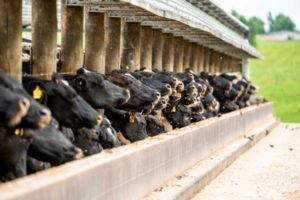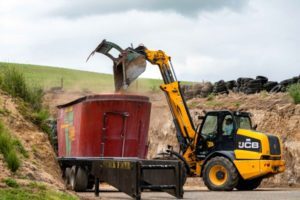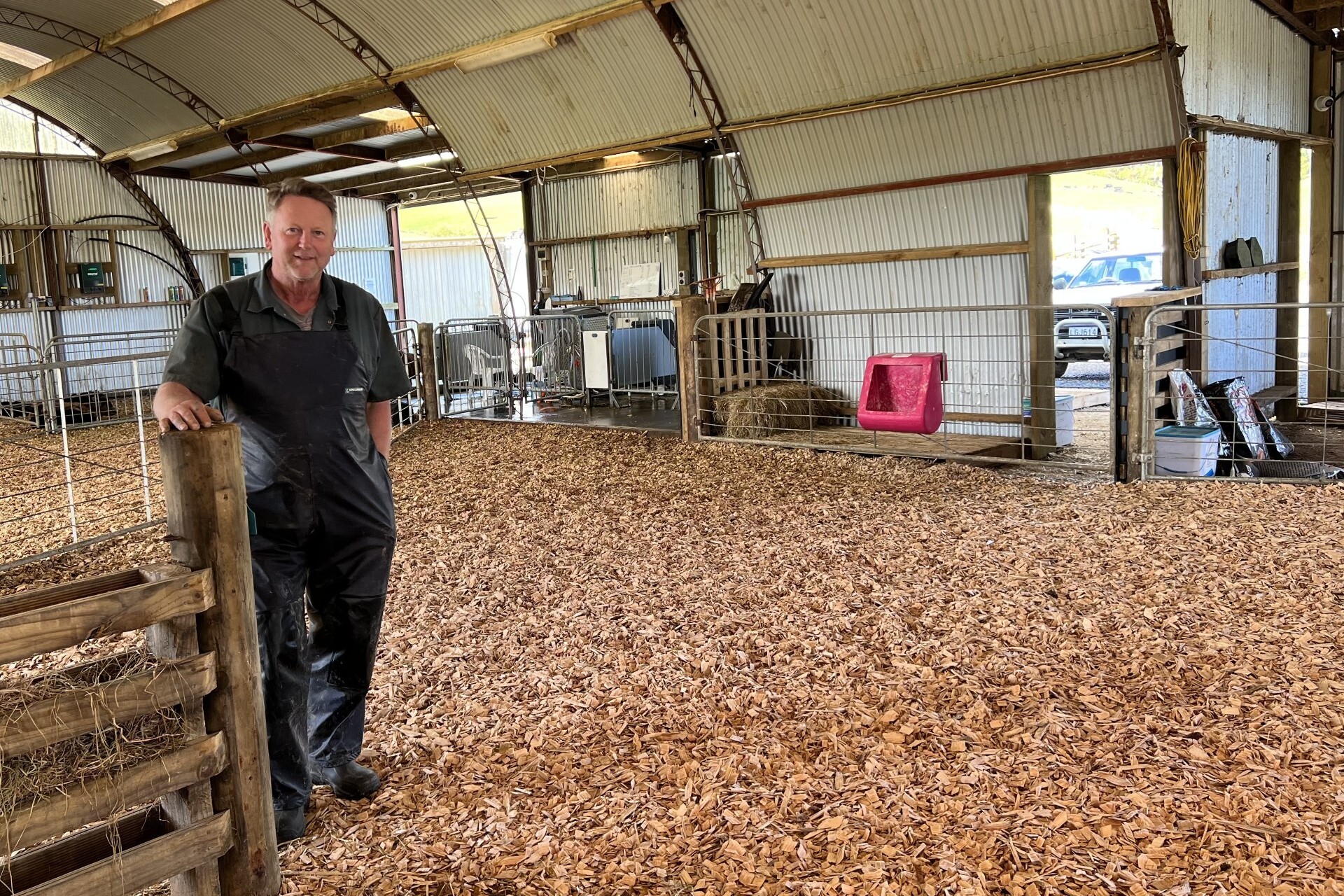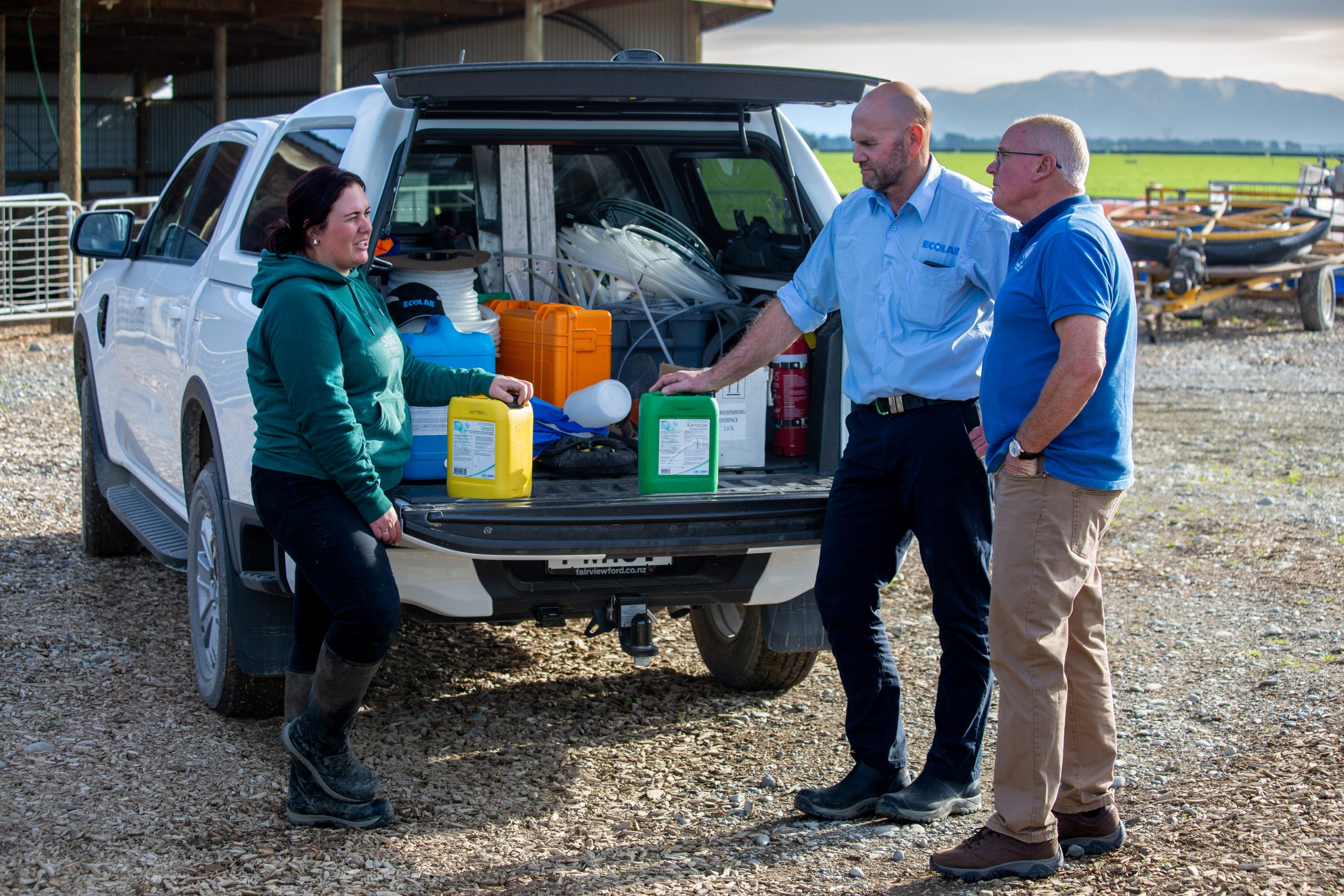For a high-input dairy farm operation, securing supplement is a key factor in the profit margin. The Bennett family have bought a support block to grow maize in a bid to control their feed costs. Sheryl Brown reports.
When buying land to use as a support block, you need to take all factors into consideration, Jeremy Bennett says.
 Jeremy is the operations manager for his family dairy farm, which he and wife Lucy own a 30% equity share in.
Jeremy is the operations manager for his family dairy farm, which he and wife Lucy own a 30% equity share in.
The family bought a 41-hectare property earlier this year predominantly as a maize cropping block for $60,000/ha – and that price had to be justified, Jeremy says.
The benefit of buying their own cropping block is they can secure feed source at a lower cost, with the bonus of having winter grazing for some of their yearlings.
The Bennetts are a DairyNZ System 5 operation that grows 35ha maize on their milking platform, and were previously buying in up to 70ha of maize silage every year.
The support block, just 23km from the home farm, is flat and has the potential to yield good maize crops, Jeremy says.
‘We wanted to guarantee feed supply, and control the price to a certain extent. Buying maize from the market, we can pay 20c/kg DM up to 25c/kg DM, depending on milk price. That’s how it works, everyone has to earn money.’
They can grow almost 40ha more themselves, at a cost of $0.26c/kg drymatter (DM) in the stack, and buy in the rest, at a cost of $0.33/kg DM in the stack.
The support block can grow maize crops that are 23 tonnes DM, which is better than the 20t DM crops they can yield off their milking platform.
They should get about 910t maize off the block and another 280t of grass silage from the annual grass, Jeremy says.
“We wanted to guarantee feed supply, and control the price to a certain extent. Buying maize from the market, we can pay 20c/kg DM up to 25c/kg DM, depending on milk price. That’s how it works, everyone has to earn money.
“But we also wanted control of planting dates, now we can harvest the same time as we harvest at home.”
They now grow Pioneer 9400, which allows them to leave the paddocks in grass for a month longer, Jeremy says.
“We used to spray out 10 September, now we spray out 10 October and plant 25 October. I felt I was missing out on grass, and protein is the most expensive supplement to buy.”

They probably get a slightly less drymatter crop, but that’s made up for by the extra grass they can harvest, he says.
They typically harvest their maize crop in the first week of March to ensure the paddocks are ready for grazing by May for the winter milkers.
When purchasing a support block you have to look at how much of the land is able to be put into crops, how much of it is steep/marginal land, and how many kilograms of drymatter you can potentially grow on that land, he says.
“If a property can only harvest 8-9t DM in grass, that has to be then into your calculations. This block is great, it’s 41ha and we were able to plant 39.4ha in maize.”
If a drystock block comes on the market and there is 30ha of pine country, that inflates the value of the rest of the land, he says. That has to be taken into your calculations.
When they bought the support block it had two houses on it which they calculated could earn up to $25,000/year in rent to subsidise the interest cost.
A bonus was grazing some yearlings for three months during winter to take the pressure off the milking platform.
When they took the property over on June 1, they were short of grass at home so sent 150 R2s there. The cartage was $4.00 each way, the last of the R2s left in September, leaving time for growth to take a cut of silage off the block before planting in maize.
Farming focus
Jeremy has been farming on his parents’ dairy farm in Richmond Downs for the best part of the last 15 years.
After school he went dairy farming in Hawke’s Bay before returning to the home farm where he has worked in various roles ever since, apart from a stint travelling overseas.
David and Raewyn have been farming on the Richmond Downs farm for 25 years and have run a high-input system for most of that time.
“Dad has tried all sorts of weird and wonderful things. I remember as a kid beating squash in the paddock we were feeding to the cows.”
David and Raewyn started split calving almost 20 years ago and have traditionally run 70% spring and 30% autumn cows.
They flipped that ratio in recent years to follow milk price, but they will be reverting back again next season, Jeremy says.

“Our best year was when we produced 604kg MS/cow – that was our best production, but we were feeding up to 10 different ingredients. We’ve simplified a lot.
“We lost focus on our grass growth – focussed on supplement and production. We have changed our farming system now to be more resilient through fluctuating milk prices.”
The profit margin of having more autumn cows turned out to be marginal because of higher feed prices and the damage to the farm during the winter months, Jeremy says.
“There was quite a lot of damage to the races and gateways, and more pasture damage – that’s hard to put a monetary value on.”
In 2008 they purchased a 157ha farm 500m down the road, originally seeing it as a support block to their home dairy farm.
The property has some steeper terrain. For the first two years they sprayed out every paddock they could get a tractor over and planted 85ha in maize. They started autumn milking 260 cows on the farm in 2013 and when they purchased an adjoining 62ha they increased cow numbers to 440 and switched to all spring calving.
“It’s quite a wet farm during the winter so we changed to spring calving. It’s steeper than the home farm.”
The milking platform is now 105ha and they graze young stock and grow 20ha of maize on the remaining area. The cows and young stock go between the two farms accordingly.
The home farm had two 400-cow feed pads but because the feed pads were used constantly it was never clean enough to divert water, so the effluent pond filled up quickly and they were irrigating at non-optimal times, Jeremy says.
They were also feeding potato waste at times and had multiple issues with pumps and stirrers.
As a solution they built four Herd Homes in 2015 on the home farm, they had already built one on the second farm two years prior. They now empty the Herd Homes twice a year and spread the effluent on the paddocks with a slurry tanker. They have eight million litres of storage on the home farm and 2m on the second farm to cater for the farm dairies. They irrigate over 120ha and 65ha respectively.
They do a weekly farm walk and Jeremy says the effluent-irrigated paddocks are performing a lot better than the rest of the farm and he wants to get effluent on to more paddocks in future.
The justification to build five Herd Homes came back to calculating the cost benefits, Jeremy says.
“We calculated that if we saved 5% wastage of feed it would save us $150,000/year. The savings on wear and tear on effluent pumps and extra pumping of rainwater that we now don’t have to deal with, would save us $50,000/year.”
The cows are fed 1500kg maize/cow/year, 1t palm kernel/cow/year, 300kg DDG/cow/year (winter milkers only), and 80kg straw or hay. They are also currently feeding the cows bread waste, and feed extra grass silage throughout the year if climatic conditions enable grass silage to be made.
The milking platforms harvest an average of 13-14t DM/ha, but in a poor year can harvest only 10t DM/ha.
The cost of bought-in supplement is $1.75/kg MS (maize, grass silage, hay, DDG, PKE, bread waste). The cropping costs are $0.18/kg MS.
The 1000 cows on the home farm are run in two herds, which change daily depending on paddock size.
“The cows are all treated the same and we match cows to the paddock. Paddock sizes vary so much on this farm.”
One day 570 cows will go to the first paddock, and the rest go to the second paddock. The next day the first 400 cows will go to the first paddock, and the rest go to the second paddock.”
The herd is predominately LIC Friesian cows, but they want to head to a more crossbred cow which will suit the farm’s contour better.
David is an AI technician and does all the AI on both farms. He inseminates the cows on the rotary, which saves a lot of time not having to draft cows out, then heads to the second farm to inseminate the drafted cows.
They are looking to simplify their system and will only be keeping spring-born calves and sell all the autumn-born calves in future.
Lucy is responsible for rearing all the calves. Raewyn takes care of most of the accounting and now supervises the grandchildren (Bella, 5 and Olly, 3), to free Lucy up to rear calves. The autumn cows start calving on March 15, and the spring herd August 1.
They have pushed the spring calving date forward because the climatic conditions are generally slightly better in August. They lose out slightly on the early spring calf market, but that’s a small loss and it’s not their main driver.
Jeremy is the operations manager, and they employ seven fulltime staff, two tractor drivers, three farm assistants on the home farm and two staff that manage the second farm.
It works well employing people in specialised roles, Jeremy says. The tractor drivers go between the properties, and Jeremy floats between the two farms.
“We could just about justify employing someone to look after the young stock on the farm.”
There is potential to milk more cows on the second farm in future and send a higher number of young stock grazing. Jeremy wants to do some calculations on their options.
“Young stock are extra work – shifting them, drenching them. We probably only do an average job – the guys are focussed on getting milk out of cows, young stock come second. They might not get shifted at the optimal time, or it’s easier to give them a big paddock for three days instead of putting up break fences.”
The stocking rate is right for now and not having to feed supplement to young stock – but once it gets dry they have to bring them into the Herd Home and it’s another cost of feed and time, he says.
Key facts
Owners: David and Raewyn Bennett (70%) Jeremy and Lucy Bennett (30%)
Location: Richmond Downs, Matamata
Area: 545ha
Milking platform: 352ha effective
Cows: 1440 Friesians
System: DairyNZ System 5, split calving 70% Spring, 30% Autumn
Production: 500kg MS/cow; 743,000kg MS
Young stock onfarm: 206 Autumn born R2s, 213 Autumn born R1s, 173 Spring born R1s, 50 Spring born R2s
Young stock out grazing: 150 Spring born R2s
Farm dairy: 54-bail rotary, protrack, ACRs, auto teat sprayer, 22-aside herringbone, auto teat sprayer.





